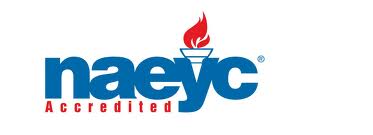The Washington St. CDC is the second full-time child care program in Richland County to be NAEYC accredited. In the United States, only 5 percent of child care programs have received this accreditation.

Early childhood programs accredited by the NAEYC Academy for Early Childhood Program Accreditation have voluntarily undergone a comprehensive process of internal self-study and improvement. Each NAEYC-accredited program must meet all 10 of the NAEYC Early Childhood Program Standards:
1. Promote positive relationships for all children and adults.
The program promotes positive relations among all children and adults. It encourages each child’s sense of individual worth and belonging as part of a community and fosters each child’s ability to contribute as a responsible community member. Warm, sensitive, and responsive relationships help children feel secure. The safe and secure environments built by positive relationships help children thrive physically, benefit from learning experiences, and cooperate and get along with others.
2. Implement a curriculum that fosters all areas of child development—cognitive, emotional, language, physical, and social.
The program implements a curriculum that is consistent with its goals for children and promotes learning and development in each of the following areas: social, emotional, physical, language, and cognitive. A well-planned written curriculum provides a guide for teachers and administrators. It helps them work together and balance different activities and approaches to maximize children’s learning and development. The curriculum includes goals for the content that children are learning, planned activities linked to these goals, daily schedules and routines, and materials to be used. NAEYC and the NAEYC accreditation system do not prescribe a specific curriculum; programs can design their own or choose a commercially available curriculum that meets NAEYC’s guidelines.
3. Use developmentally, culturally, and linguistically appropriate and effective teaching approaches.
The program uses developmentally, culturally, and linguistically appropriate and effective teaching approaches that enhance each child’s learning and development in the context of the curriculum goals. Children have different learning styles, needs, capacities, interests, and backgrounds. By recognizing these differences and using instructional approaches that are appropriate for each child, teachers and staff help all children learn.
4. Provide ongoing assessments of child progress.
The program is informed by ongoing systematic, formal, and informal assessment approaches to provide information on children’s learning and development. These assessments occur within the context of reciprocal communications with families and with sensitivity to the cultural contexts in which children develop. Assessment results benefit children by informing sound decisions, teaching, and program improvement. Assessments help teachers plan appropriately challenging curriculum and tailor instruction that responds to each child’s strengths and needs. Assessments are also important in identifying children with disabilities and ensuring that they receive needed services.
5. Promote the nutrition and health of children and staff.
The program promotes the nutrition and health of children and protects children and staff from illness and injury. Children must be healthy and safe in order to learn and grow. Programs must be healthy and safe to support children’s healthy development.
6. Employ and support qualified teaching staff.
The program employs and supports a teaching staff with the educational qualifications, knowledge, and professional commitment necessary to promote children’s learning and development and to support families’ diverse needs and interests. Teachers who have specific preparation, knowledge, and skills in child development and early childhood education are more likely to provide positive interactions, richer language experiences, and quality learning environments.
7. Establish and maintain collaborative relationships with families.
The program establishes and maintains collaborative relationships with each child’s family to foster children’s development in all settings. These relationships are sensitive to family composition, language, and culture. To support children’s optimal learning and development, programs need to establish relationships with families based on mutual trust and respect, involve families in their children’s educational growth, and encourage families to fully participate in the program.
8. Establish and maintain relationships with and use resources of the community.
The program establishes relationships with and uses the resources of the children’s communities to support the achievement of program goals. Relationships with agencies and institutions in the community can help a program achieve its goals and connect families with resources that support children’s healthy development and learning.
9. Provide a safe and healthy physical environment.
The program has a safe and healthful environment that provides appropriate and well-maintained indoor and outdoor physical environments. The environment includes facilities, equipment, and materials to facilitate children and staff learning and development. An organized, properly equipped and well-maintained program environment facilitates the learning, comfort, health, and safety of the children and adults who use the program.
10. Implement strong program management policies that result in high-quality service.
The program effectively implements policies, procedures, and systems that support stable staff and strong personnel, fiscal, and program management so all children, families, and staff have high-quality experiences. Effective management and operations, knowledgeable leaders, and sensible policies and procedures are essential to building a quality program and maintaining the quality over time.
